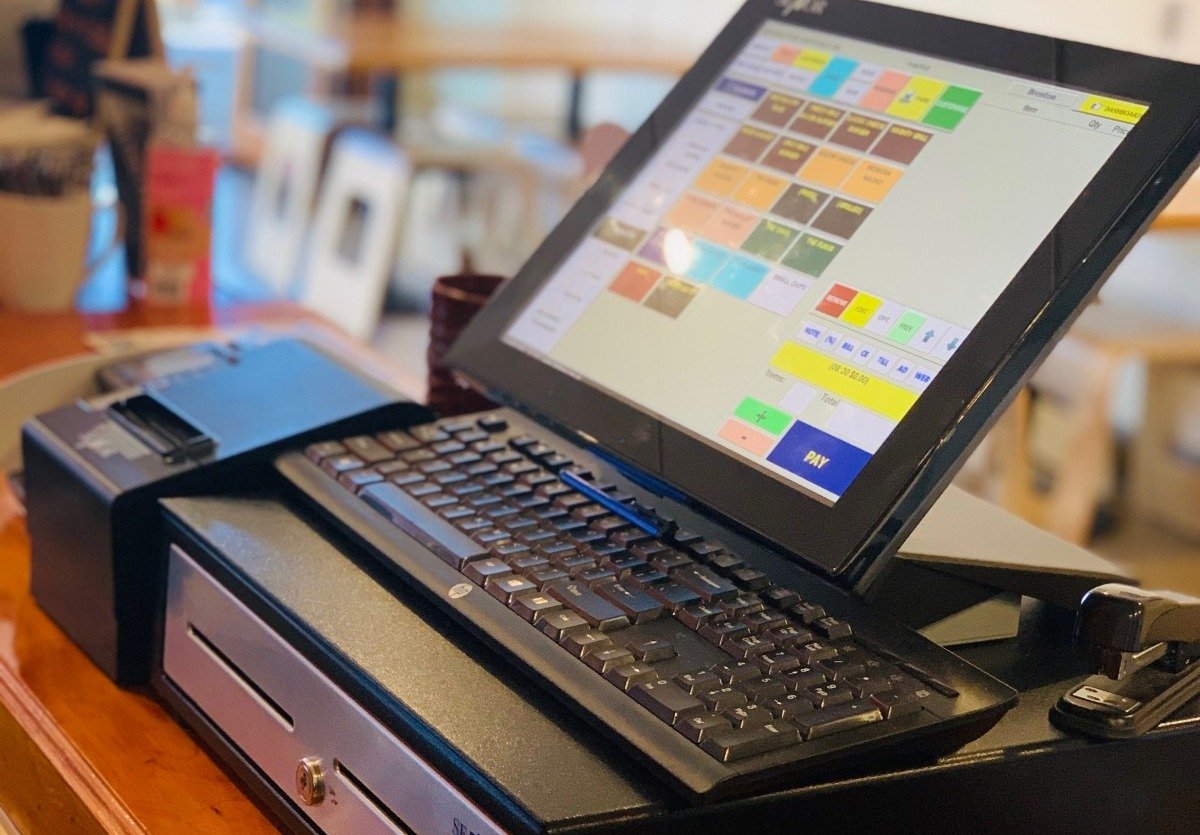In today’s fast-paced retail environment, technology has become essential for businesses to streamline their operations. A point of sale (POS) system can be the solution for those looking to improve operations and increase efficiency. When it comes to point of sale systems, there are a few essential components that help you complete transactions at your business’ checkout. These include monitors, a receipt printer, a cash drawer, a mouse and keyboard. Understanding the function of each piece of equipment can help you determine what you will want out of a POS system for your company.
Monitor
The screen, or monitor is considered to be the most important part of the point of sale system. The monitor displays the information needed to process transactions and payments. These specialized screens are mostly flat, saving space. Many offer touchscreen functionality which can eliminate the need for other hardware, such as a keyboard.
Another increasingly popular option for POS system monitors is a tablet. A tablet-based POS can provide additional functionality, such as being portable. They are also smaller, taking up less space and can often be used to display information to the cashier and the consumer. Although tablets can be a great option for many businesses, some may experience drawbacks in their decreased durability and potential limitations with software applications.
Ultimately, the monitor you choose will be specific to your business needs and utilization.
Related Read:
Barcode Scanner
The barcode scanner plays a vital role, as it ensures the efficiency of the entire system. Let’s look at the benefits of using a barcode scanner and how to choose a suitable scanner for your business.
A barcode scanner is a piece of hardware that reads information encoded in a barcode and sends that information to the POS System. The scanner saves cashiers from having to input product information manually, which can be time-consuming and prone to entry errors. When selecting a barcode scanner, there are several factors to consider. A high-quality scanner will provide faster and more accurate results. A lower-quality scanner can have a reduced range resulting in multiple scans to read the barcode information.
Additionally, businesses should consider the physical configuration of the scanner. Handheld scanners are better suited to some companies, while embedded scanners are ideal for others. Handheld scanners provide flexibility and mobility, allowing cashiers to scan products anywhere in the store. On the other hand, a fixed scanner may provide a more secure and stable setup.
Cash Drawer
A cash drawer is one of the most antiquated components of a POS setup. Of course, they have come a long way since they were first developed over 150 years ago! In today’s tech age, debit and credit card payments and even mobile applications are primary payment methods; however, paying in cash is still a go-to for many individuals.
The cash drawer plays an essential role in the POS system as it supports both accuracy and security in your cash transactions. Many cash drawers are electronic and automatically open when a cash transaction happens, allowing the cashier to store the acquired money and give back any change as appropriate. A cash drawer makes it easy for employees to manage and reconcile cash transactions as they are specifically designed to keep money organized.
When selecting a cash drawer for your POS system it is essential to make sure that it is compatible with your system to ensure proper functioning.
Consumer Facing Display
The consumer-facing display allows the buyer to see information, including pricing as you scan products during checkout. Information that is most typically displayed to customers include, item name, product price, applicable taxes and total price.
The consumer-facing display can range from a very basic screen to more sophisticated displays allowing for advertising information or custom messaging. A consumer-facing display is not always a requirement as some retailers will utilize the cashier monitor for both purposes. The choice of display will depend on your business and the desired setup.
Read: Why Choose Retail Tech for POS System Repair?
Keyboard and Mouse
Most point of sale systems will require a keyboard and mouse. These pieces of equipment will allow the user to use and navigate the system quickly and efficiently. Many newer systems will utilize a touchscreen interface; however, even a setup with a touchscreen monitor will most likely need a computer keyboard and mouse to configure updates properly.
Receipt Printer
Another essential component of a point of sale system is the receipt printer. The receipt printer provides customers with a record of their transactions, displaying details of what was purchased, when, where and how much their purchase cost. When selecting a receipt printer for your business, some of the most important considerations will be ease of use and durability. You will also want to consider the print speed and quality, as well as the paper roll capacity and print method.
There is a lot to consider when choosing the right POS system for your business needs. Retail Tech can help you ensure your point of sale system is right for you and your company.
Retail Tech carries a wide variety of new and refurbished POS equipment. We offer installation and staging, POS printer repairs, and more. If you need help choosing a POS system, contact our POS systems specialists for help finding the perfect point of sale solution for your small business.
At Retail Tech Inc. we offer high-quality technology hardware solutions through exceptional standards in service, reliability, and cost effectiveness. As
a seamless extension of your IT team, we provide end-to-end support and service every step of the way, from planning to procurement,
deployment, maintenance and beyond. Contact our experts to get your personal technology solution today!



